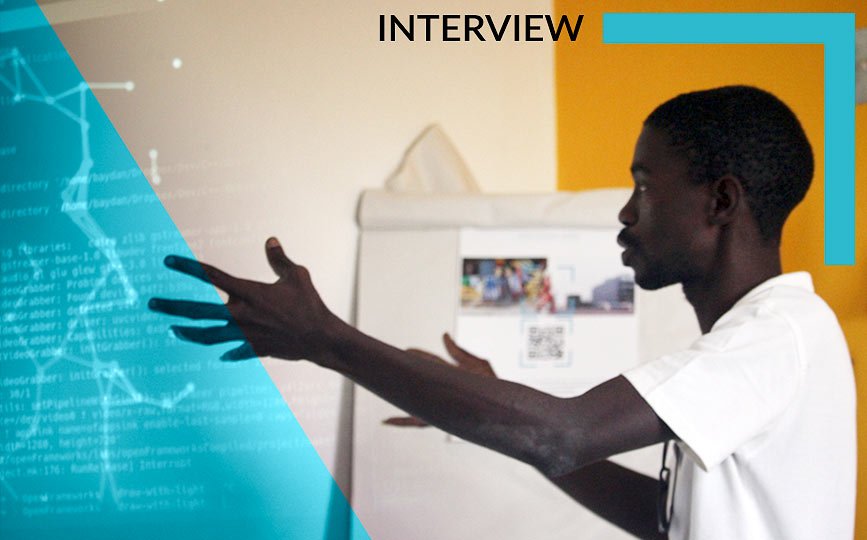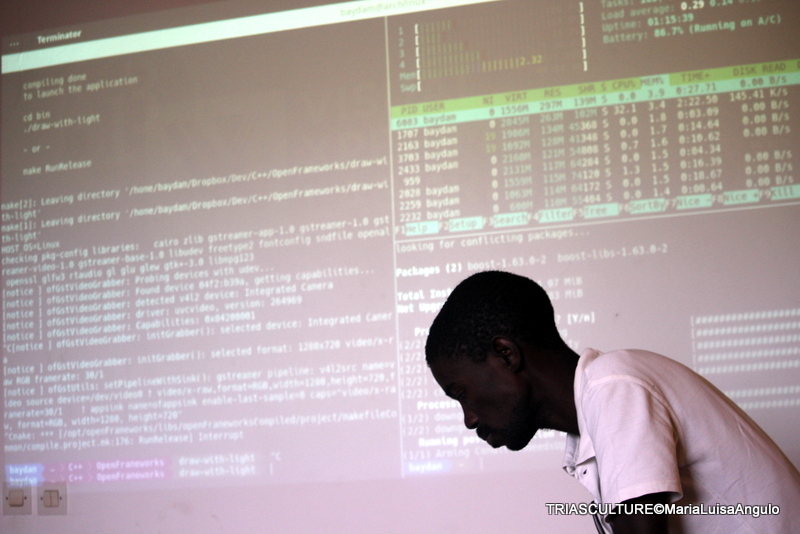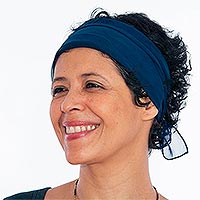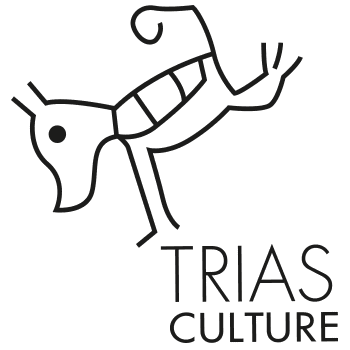
May you tell us which are your artistic’s origins?
When I first started, I was only a consumer of arts such as cinema, music and literature even if I used to draw just for fun. My first real longing for artistic expressions developed when I started to visit Ker Thiossane center and after I worked a lot on the project MapMap, an open source Video Mapping software. This made me meet, exchange and collaborative work with many artists engaged in digital arts. Later, I found myself immersing in a deep and constant research for new processes of artistic creation.
Do you define yourself as a digital artist?
I consider myself an emerging artist because even if I found a means of expression through digital language which has no more secret for me, I still need to continue developing my artistic sensitivity.
Did your artistic practice started directly with the utilization of numeric or have you evolved from a « traditional» discipline to a numerical one.
I developed a passion for computer sciences since childhood maybe because my father let me use a computer when I was 10 years old. From that time on, I developed an obsession to understand how these machines worked until I discovered, after reading a book on computer sciences, that they were mere super calculators with all the programs man-created. I said to myself, if some men were able to created these programs which give the impression that computers are intelligent, why can’t I do the same. From that time on, I studied programming. I was already a programmer before turning an artist.
Tell us briefly about your artistic work, environment, inspirations, and the subjects that motivate you.
Fascinated by interactive and generative systems, I use interactive art technologies to create works which base on the theoretical horizon of the sphere of human interactions. Computer programming and algorithms are in the core of my practice. I privilege open source and collaboration in order to more and more associate arts to sciences. I always try to collaborate with other artists from other fields such as dance, graffiti or even music. My inspirations can originated from everywhere starting from cultural, linguistic and natural human diversities, from the child’s mental development in it’s own environment to the powerless of human beings in front of machines. The immersion, optic illusion and perception of the species that are around us are very passioning subjects for me.
For your numerical creations, do you work alone or is it a collective work with a technical team’s intervention offering you solutions to your artistic research?
In most of digital works, I more often work with the other members of the VX Lab who are multidisciplinary and count graphists, electronicians, electro-mechanic engineers, developers and so on. All in all, I almost never work alone on my digital art projects.
Within your environment, what are the principal constraints that an artist trying to experiment and create with existing tools may encounter?
The main constraints which can hinder an artist experimenting in this environment are lack of space, adequate equipment and tools or even lack of technological wake in order to have some information on last and current tools and trends. Also lack of grants in order to subsist during research and development process can be a challenge.
In your country, does a dynamic around numerical creation exists: events, grants, research centers, meeting/working spaces, others?
Until now, there is no such dynamics around digital creation in spite of some events initiated by the EUNIC during last biennial and Afropixel festival organized by Ker Thiossane. You need to know that promotors and cultural medias are very conservative, this is why they always concentrate on traditional arts and do not feel the need to see what’s happening elsewhere. Since the creation of VX Lab, we have never received any grants in spite of our efforts to get some funding from institutions and up to now, our researches are funded by ourselves. Ker Thiossane and Trias Culture are also research centers but apart from VX Lab and them there is nobody else to my knowledge. There are not really many local artists in the field of digital arts, even if on one side many people use digital tools in their creations.
Regarding the audience, what is the response to numerical pieces of art in your country? What kind of audience usually assists to this kind of events?
Paradoxically, the audience is very exited when it comes in front of a digital art work or attends this kind of performance without even knowing this is digital art. And it even happens that some people order a performance from us, but once confronted to the hard reality which is the high cost of the installations, they reconsider their propositions.
Have you ever participated to a Digital Art’s contest? Tell-us about it…
I have participated in some creation residences around the world, but I have never participated in a digital arts award.
Do you have any contacts with networks of Latin-American artists?
Not really. At least not in the digital arts field. I once met two Brazilian dancers in Dakar and we exchanged a little bit. I have in my contacts a Bolivian born new media artist but she lives in Spain.
How do you imagine the future of Digital Art’s development in your country and in Africa?
The development of digital arts in Africa and more particularly in Senegal will first pass through the stage of dissemination in which a lot of activities of knowledge sharing is organized in various places all over the country and not only in Dakar so the audience which is up to now very conservative is sensitized on the economic and cultural stakes linked to these fields. This means creating spaces that are specifically dedicated to digital arts where people can come to experiment, learn and freely exchange with other artists engaged in the field. And ultimately, this means installing mechanisms allowing artists to make a living from their art, because even if digital arts are still very passioning, the problem of survival will push those artists to do something else.











